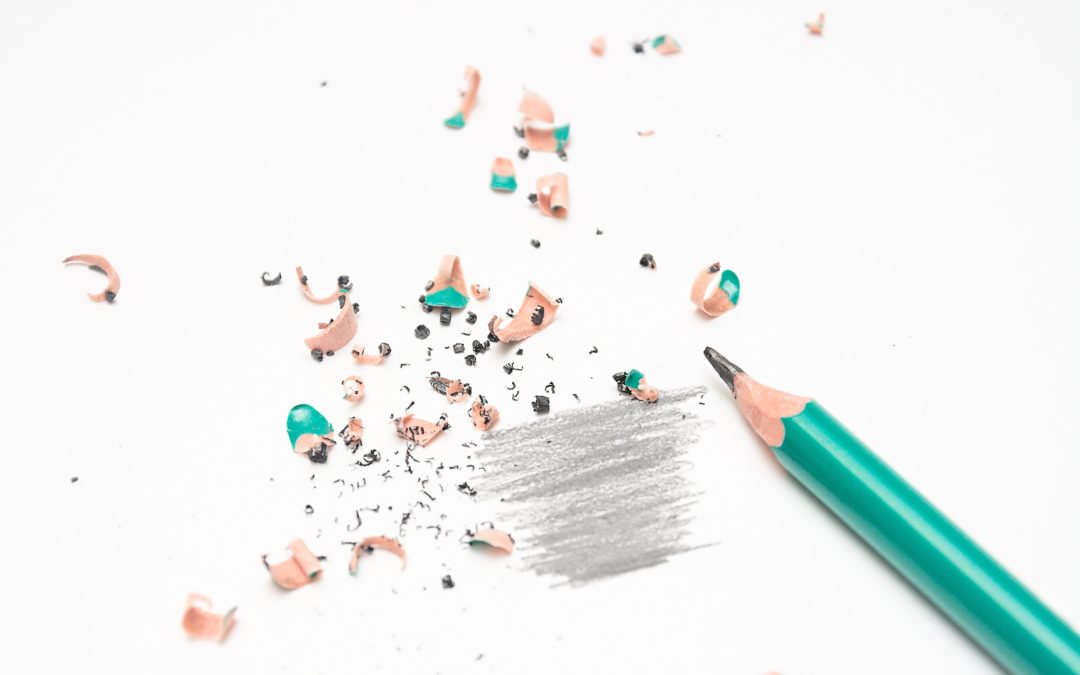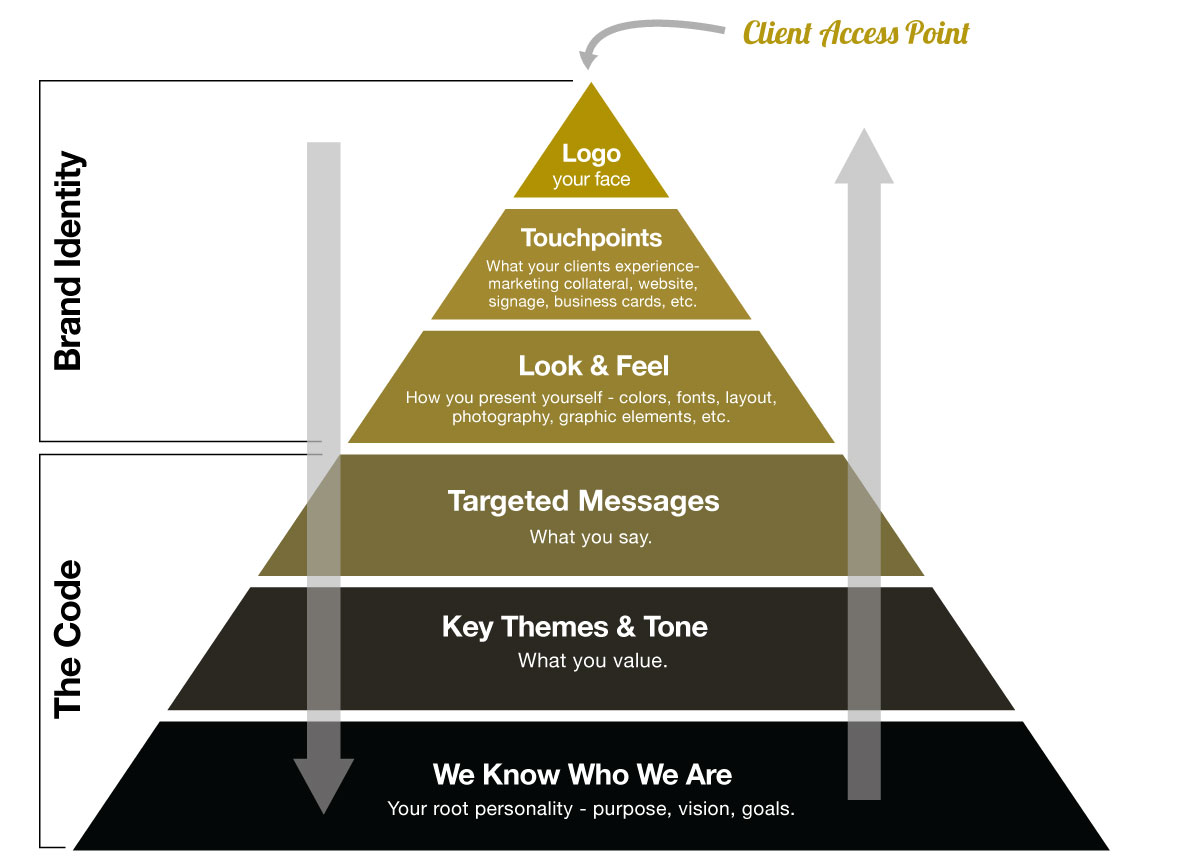The 6 Steps to Designing a Badass Logo
When you’re looking for a new logo for your rebrand (or your brand launch), there’s a lot to be done before you get to the actual designing. It takes a strategy to get answers about what a logo should encompass and it takes a strategic, creative logo design process to develop an effective, unique brand logo.
Logo creation is an art and a science. In other words, there are things that work, things that certainly don’t, and things that sometimes work under the right circumstances. Ask 10 graphic designers and they will all give you a different process for creating a logo.
The one thing that your logo designer should absolutely include in their creative process is strategy. A logo is one of the most important aspects of a cohesive brand. But in order for it to shine, it has to work cohesively with other aspects of your brand.
The logo design process needs to be well thought out. It has to be organized. And no logo should be designed with a strategy in place.
Why A Logo Is NOT The First Step to Branding
What’s the first thing someone coming across your brand is likely to see? Probably your logo. This means the design and quality of your logo is one of the most important pieces of your brand—it’s presumably the first impression after all. But is it the piece that gets the first glimpse of attention when branding your business? Nope, it’s not, or at least shouldn’t be.
A logo is so much more than just an image with your business’s name plastered across it. It has meaning, strategy, and an entire brand story behind it. Your brand’s logo is just one teeny tiny piece of the overall business. Behind your logo is your voice, your personality, your messaging, and your visual guidelines—all elements that have to play into your logo design in order for it to work as a successful first impression. This is why a logo should be the very last thing that is developed for a brand.
We made it simple to visualize this concept—everything’s easier in a pyramid, right? Check out the way that Bareknuckle does logo design.
Your clients access your brand at the top of the pyramid and work their way deeper into your messaging, voice, look, feel, and tone. But that’s not the way the branding process works. In order to successfully craft a logo that tells your brand story, you have to brand your business in the opposite direction—from the bottom up. When working in this direction, your logo is able to incorporate your brand story appropriately because every other part of your brand is already defined.
So let’s get to it! Here are some tips for crafting successful brand logos.
1. Have The Talk
Before you can begin the logo design process, you need to know what your brand needs. Have a long sit-down and get clear on who it is you are. Start with your roots. Who are you? What’s your brand’s personality? And get clear on your brand goals. Then determine the themes of your company and get down to what your messaging says.
You can jump into visuals after that. Figure out what colors and fonts you’re going to stick to. If you put guidelines on using the colors navy, gold, and white, then you probably shouldn’t be throwing neon orange into any part of your brand.
Having this ever-so-important conversation with yourself, and anyone else who has a say in your brand, will help you get you clear on what it is you’re actually striving for with your logo. It’ll keep you on track, so you don’t have a $35 million Tropicana logo fail like the company did in 2009.
2. Do Your Research
You might not have a clear plan in mind—you might kind of know what you like, but you’re not confident in that decision quite yet. This is when having clear communication with your designer and doing your research can really help.
When you begin your research, be sure to gather specific, imperative information. The goal is to get an understanding of possible themes to work with before you begin brainstorming. What do your competitors look like? You don’t want to be exactly like them, that’s not going to help you stand out in the crowd. Explore your industry and stalk your competitors (in a non-creepy, but successful entrepreneur kind of way). Look at what’s working and jot down what might also work for your brand.
3. Organize Your Game Plan
What’s a project without a game plan? Make sure to get clear on the goals you have for your logo. What do you want to achieve? Bridge the gap between the visual understanding of your logo and what your brand actually does.
Your logo should tell your brand story. Seeing your logo for the first time, a customer should have at least a general idea of what you’re all about. Otherwise they might have an alternative understanding of what you do or be completely confused about it. And they most likely will turn away and not have any interest in diving deeper into your brand to understand what it is you do.
For example, as a writing company, you probably don’t want your logo to be of a bear … and only a bear. That’s oddly confusing and even if the mascot of your brand is actually a bear, having only a bear as your logo doesn’t really tell your story. It’s fine to incorporate a bear into your logo in one way or another, but use a tagline or add an image that has to do with writing too.
4. Pen—Or Marker, Or Crayon—To Paper
Time to indulge in playtime with your brain (structured playtime that is). Explore themes outlined from your research, experiment with logo types—iconic, logotype, combos, you know the drill—and identify potential keywords that correspond with the brand. Your brain is much more likely to be drawn to what’s ‘right’ for your brand when you can actually visualize what you’re thinking.
Then, when you get a solid few to develop, begin the logo design process. Now there’s no need to fully develop every single idea that you have sketched out. Choose a few that make sense for your brand and resonate with your creative mind. Then alter, add, redraw, redesign, and switch elements of it up until your eyes like what you see.
5. Walk Away
If you look at something for too long, you’ll lose perspective. It’s kind of like when you write the same word over and over and over again, it eventually looks like it’s spelled wrong. Take a step back. It doesn’t have to be for long, but stepping away for just a bit and giving yourself some time to reflect can do wonders for your creative mind.
When you return to the drawing board, take a fresh new look and organize your sketches. What still looks good? When you come back to take that first glance, what are you drawn to and what sticks out like a sore thumb of ugliness?
Even if you find that some are way off from what your brand actually needs out of this logo design process, always save your sketches—they can be useful pieces in the future. Keep your most effective ideas and set aside the rest.
6. First Impressions Will Make Or Break A Logo
It’s not just your first impression that matters, it’s your audience’s too. What if the very first thing they see is your logo and they immediately say something along the lines of, “Wow, that’s hideous.” Ouch! That’s something no brand wants to hear.
The same goes for you as a designer or a small business owner. If the first time you come back to your logo your first impression is that you’re not drawn to it at all, then it’s time to reevaluate. What turned you off? It’s a first impression, so oftentimes your first gut instincts are on point. Go with them. Listen to them. Design and think based off of them. Your instincts will tell you a lot about what’s good, what’s bad, and what will stop anyone in their tracks and think Damn, now that’s a logo!
The Logo Experts
Want to see Bareknuckle’s logo design process in action? Check out our logo case studies of our badass past clients. Or buy us a beer and let’s talk logos with our expert graphic designers.



Recent Comments